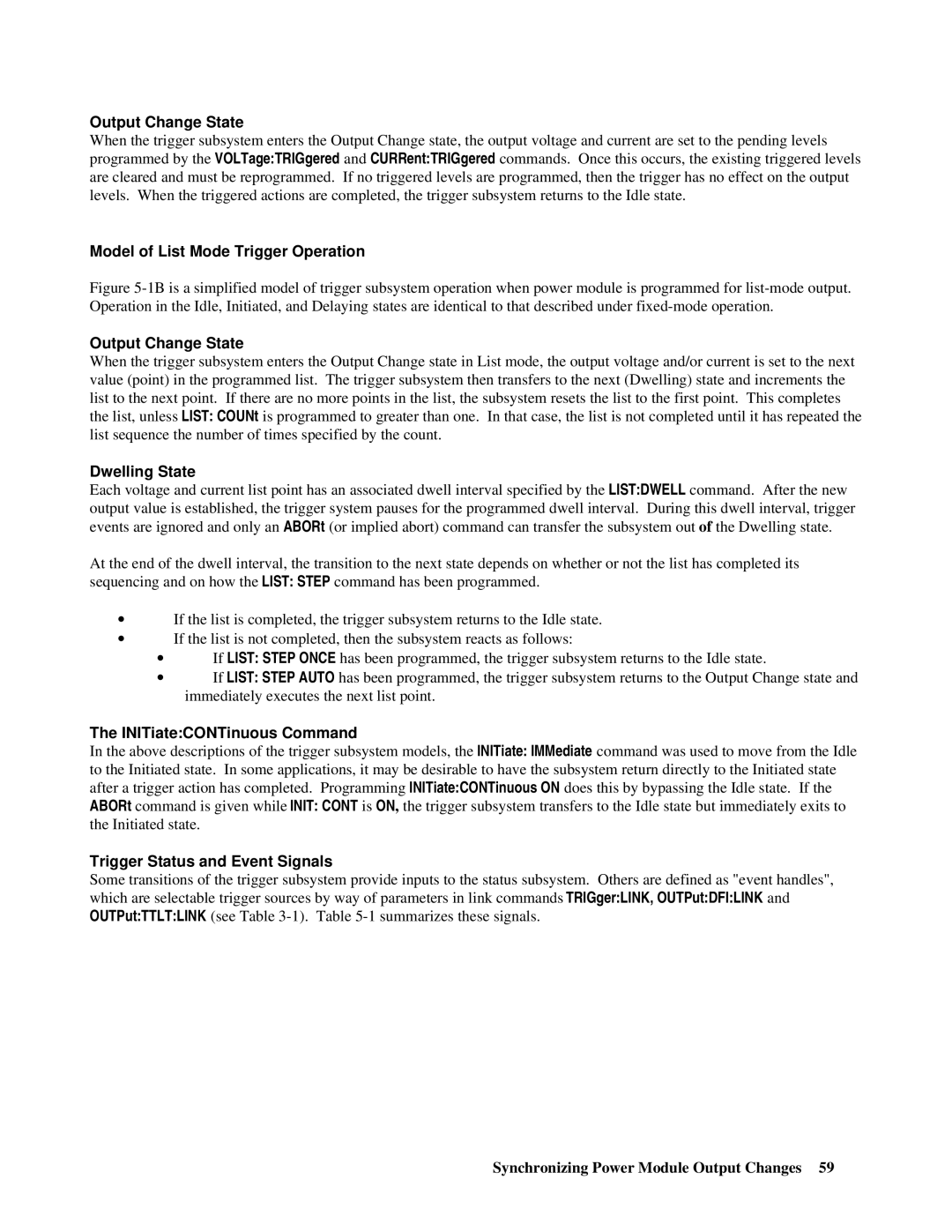Output Change State
When the trigger subsystem enters the Output Change state, the output voltage and current are set to the pending levels programmed by the VOLTage:TRIGgered and CURRent:TRIGgered commands. Once this occurs, the existing triggered levels are cleared and must be reprogrammed. If no triggered levels are programmed, then the trigger has no effect on the output levels. When the triggered actions are completed, the trigger subsystem returns to the Idle state.
Model of List Mode Trigger Operation
Figure 5-1B is a simplified model of trigger subsystem operation when power module is programmed for list-mode output. Operation in the Idle, Initiated, and Delaying states are identical to that described under fixed-mode operation.
Output Change State
When the trigger subsystem enters the Output Change state in List mode, the output voltage and/or current is set to the next value (point) in the programmed list. The trigger subsystem then transfers to the next (Dwelling) state and increments the list to the next point. If there are no more points in the list, the subsystem resets the list to the first point. This completes the list, unless LIST: COUNt is programmed to greater than one. In that case, the list is not completed until it has repeated the list sequence the number of times specified by the count.
Dwelling State
Each voltage and current list point has an associated dwell interval specified by the LIST:DWELL command. After the new output value is established, the trigger system pauses for the programmed dwell interval. During this dwell interval, trigger events are ignored and only an ABORt (or implied abort) command can transfer the subsystem out of the Dwelling state.
At the end of the dwell interval, the transition to the next state depends on whether or not the list has completed its sequencing and on how the LIST: STEP command has been programmed.
∙If the list is completed, the trigger subsystem returns to the Idle state.
∙If the list is not completed, then the subsystem reacts as follows:
∙If LIST: STEP ONCE has been programmed, the trigger subsystem returns to the Idle state.
∙If LIST: STEP AUTO has been programmed, the trigger subsystem returns to the Output Change state and immediately executes the next list point.
The INITiate:CONTinuous Command
In the above descriptions of the trigger subsystem models, the INITiate: IMMediate command was used to move from the Idle to the Initiated state. In some applications, it may be desirable to have the subsystem return directly to the Initiated state after a trigger action has completed. Programming INITiate:CONTinuous ON does this by bypassing the Idle state. If the ABORt command is given while INIT: CONT is ON, the trigger subsystem transfers to the Idle state but immediately exits to the Initiated state.
Trigger Status and Event Signals
Some transitions of the trigger subsystem provide inputs to the status subsystem. Others are defined as "event handles", which are selectable trigger sources by way of parameters in link commands TRIGger:LINK, OUTPut:DFI:LINK and OUTPut:TTLT:LINK (see Table
Synchronizing Power Module Output Changes 59
